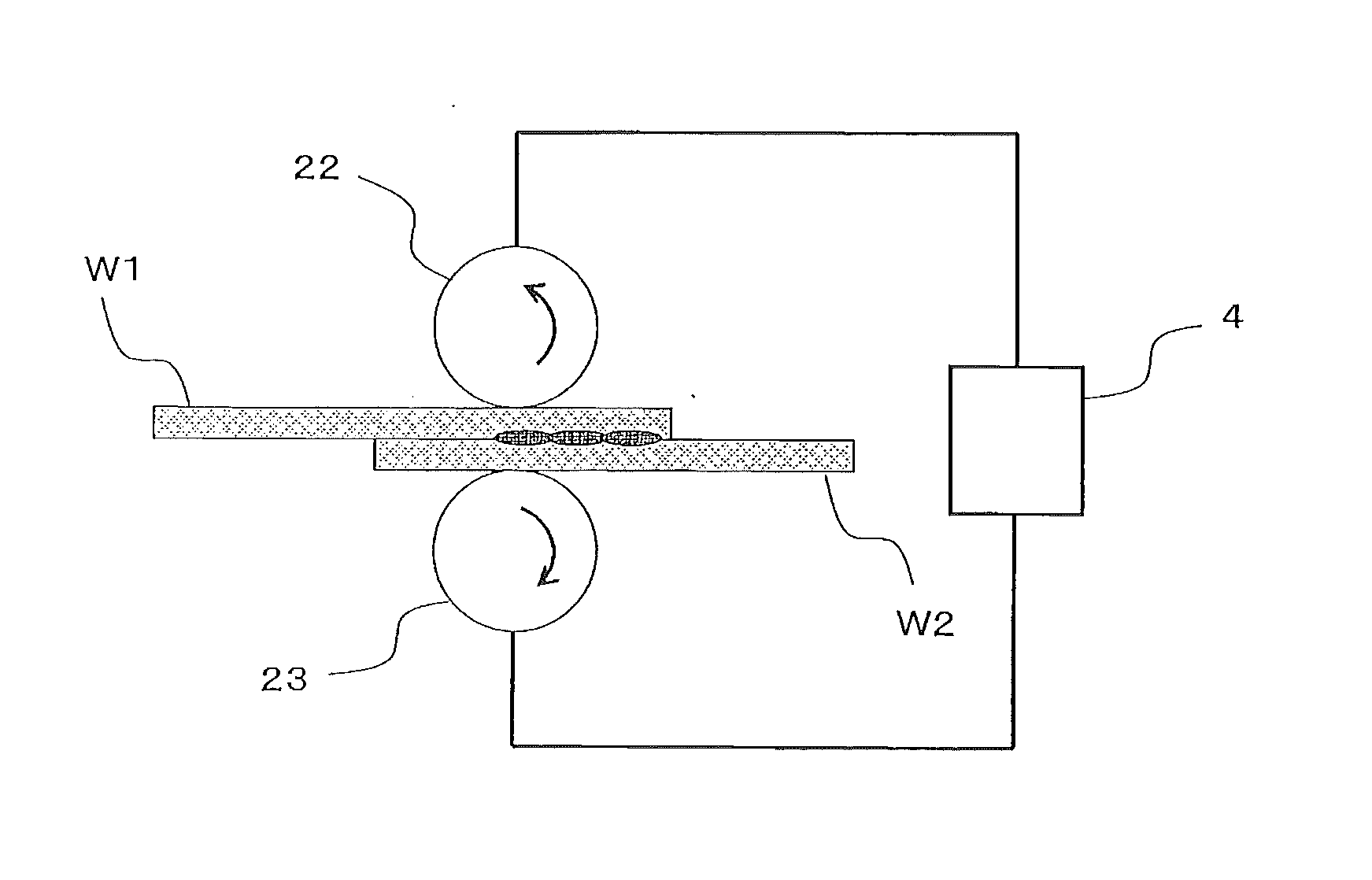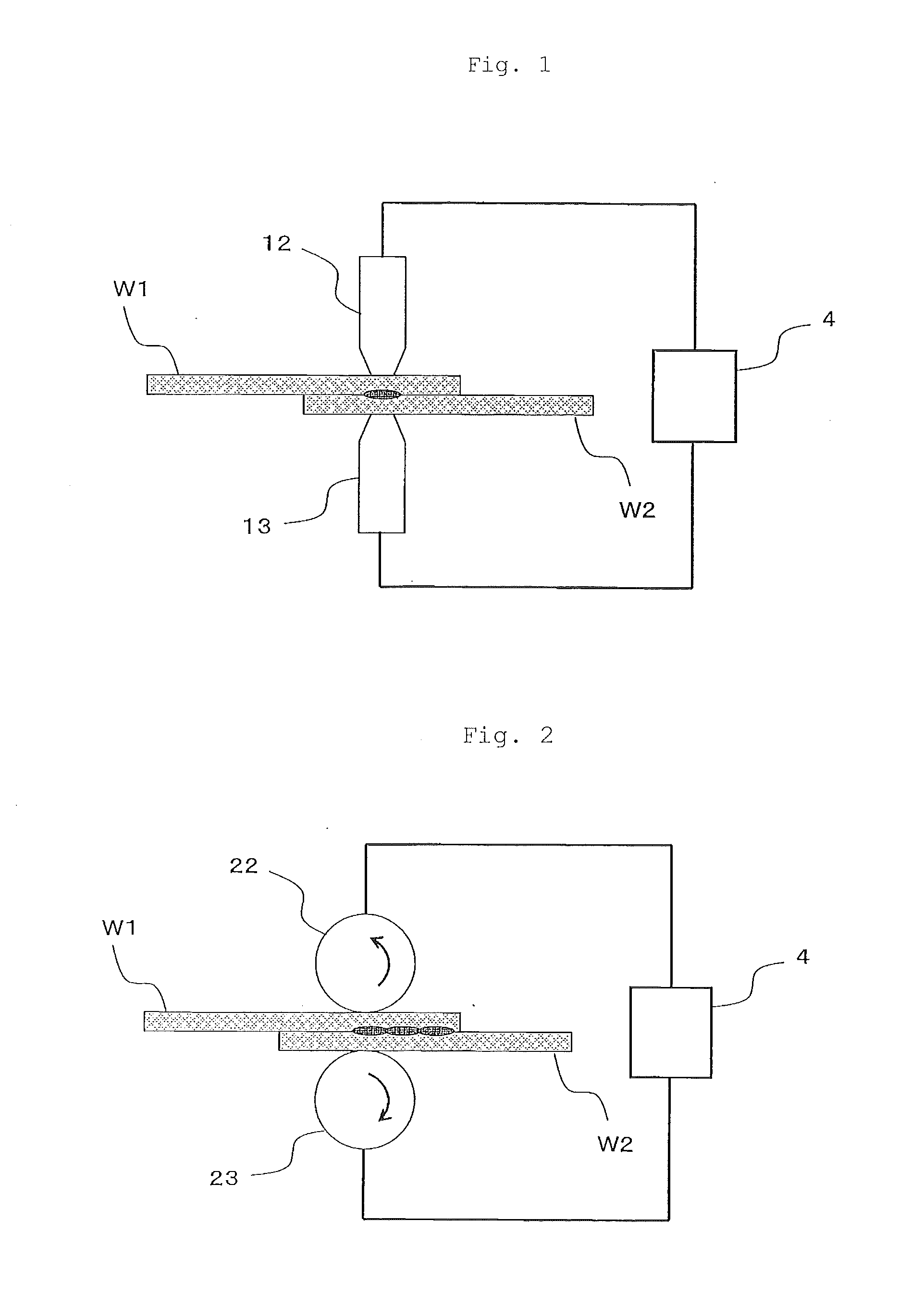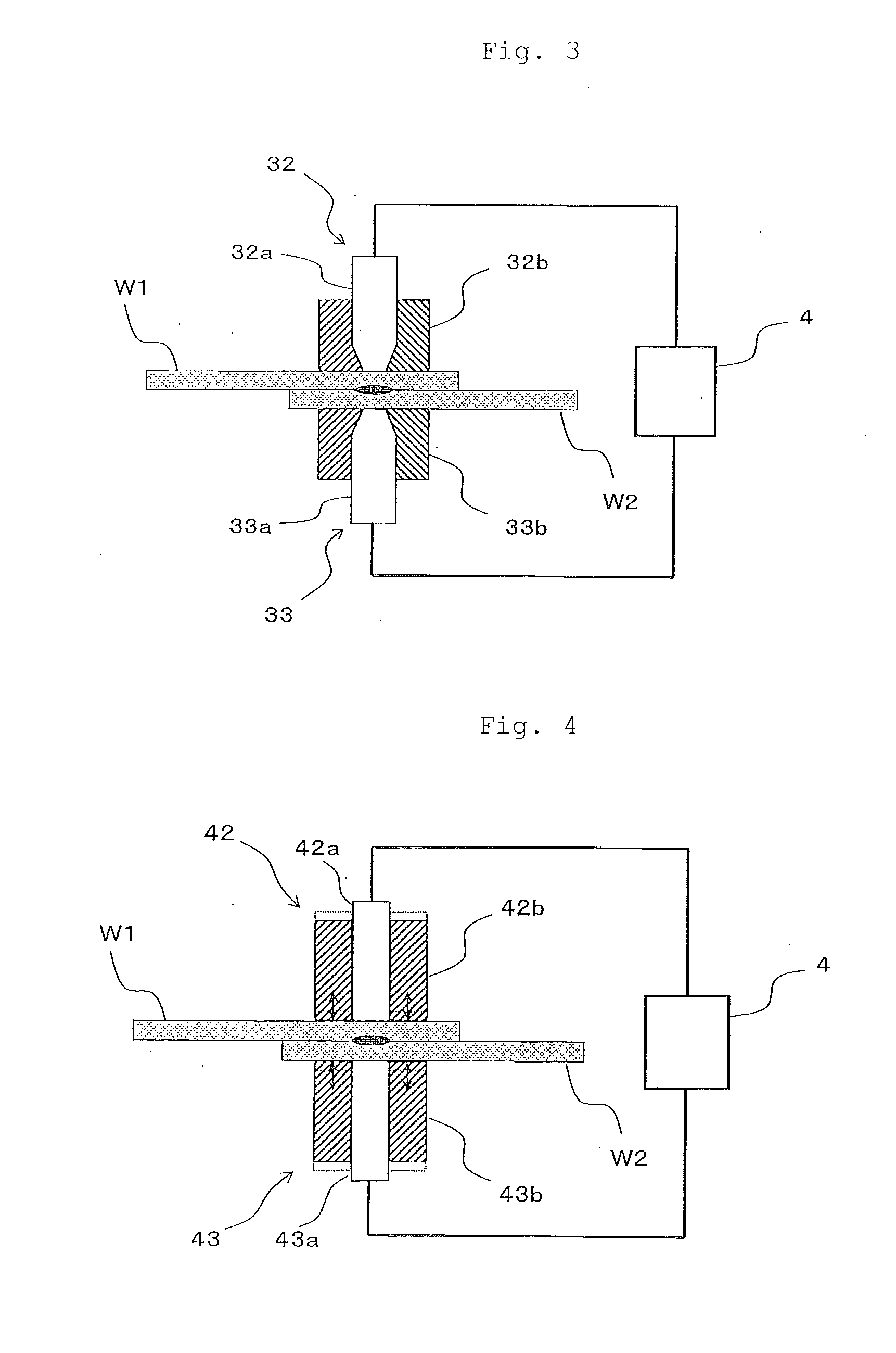Method of manufacturing a bonded body
a technology of bonded body and bonded body, which is applied in the direction of controlling lamination, process and machine control, mechanical control devices, etc., can solve the problems of increasing reducing the strength of the base material, and reducing the number of processing steps, so as to shorten the time, and reduce the risk of deformation
- Summary
- Abstract
- Description
- Claims
- Application Information
AI Technical Summary
Benefits of technology
Problems solved by technology
Method used
Image
Examples
example 1
[0110]Carbon fibers cut to an average fiber length of 20 mm (Tenax STS40 of Toho Tenax Co., Ltd., average fiber diameter of 7 μm) were randomly oriented to ensure that the average weight became 540 g / m2 and the weight ratio of the carbon fibers became 52% and Unitika Nylon 6 of Unitika Ltd. was used as a matrix to prepare a carbon fiber composite material.
(Fixing, Energization)
[0111]Two of the composite materials having plate dimensions of 100 mm×25 min×2 mm were prepared and overlapped each other, and the overlapped portion was sandwiched between electrodes. Copper electrodes having an end diameter of 12 mm were used. The welding pressure was set to 6.6 kN (58.4 MPa). A 60 A current was applied from a DC power source for 1 second while the overlapped composite materials were pressurized. The number of bonding points was 1.
(Evaluation)
[0112]When a tensile shear test was made on the obtained bonded body at a speed of 1 mm / min by using the 5587 300 kN floor type univ...
example 2
[0113]Two composite materials of the same type as that of Example 1 were prepared, overlapped each other and sandwiched between copper electrodes having an end diameter of 5 mm. The welding pressure was set to 3.4 kN (173 MPa), and a 60 A current was applied from a DC power source for 2 seconds. The number of bonding points was 1.
(Evaluation)
[0114]When a tensile shear test was made on the obtained bonded body at a speed of 1 mm / min by using the 5587 300 kN floor type universal tester of Instron Co., Ltd., the break strength was 2.77 kN. Deformation such as warp was not observed in the obtained bonded body.
example 3
[0115]Carbon fibers cut to an average fiber length of 20 mm (Tenax STS40 of Toho Tenax Co., Ltd., average fiber diameter of 7 μm) were randomly oriented to ensure that the average weight became 540 g / m2 and the weight ratio of the carbon fibers became 52%, and Unitika Nylon 6 of Unitika Ltd. was used as a matrix to prepare a carbon fiber composite material.
(Fixing, Energization)
[0116]Two of the composite materials having plate dimensions of 100 mm×25 mm×1.5 mm were prepared and overlapped each other, and the overlapped portion was sandwiched between electrodes. A copper electrode having an inner diameter of 7 mm and a pressure aided electrode made of fluororesin and having an outer diameter of 16 mm were used. The welding pressure between the electrodes was set to 5.6 kN (27.9 MPa). Electricity was applied from a DC power source while the composite materials were pressurized. The current value was raised from 5 A to 50 A in first 0.5 second and then maintained at 5...
PUM
| Property | Measurement | Unit |
|---|---|---|
| Time | aaaaa | aaaaa |
| Percent by mass | aaaaa | aaaaa |
| Percent by mass | aaaaa | aaaaa |
Abstract
Description
Claims
Application Information
 Login to View More
Login to View More - R&D
- Intellectual Property
- Life Sciences
- Materials
- Tech Scout
- Unparalleled Data Quality
- Higher Quality Content
- 60% Fewer Hallucinations
Browse by: Latest US Patents, China's latest patents, Technical Efficacy Thesaurus, Application Domain, Technology Topic, Popular Technical Reports.
© 2025 PatSnap. All rights reserved.Legal|Privacy policy|Modern Slavery Act Transparency Statement|Sitemap|About US| Contact US: help@patsnap.com



